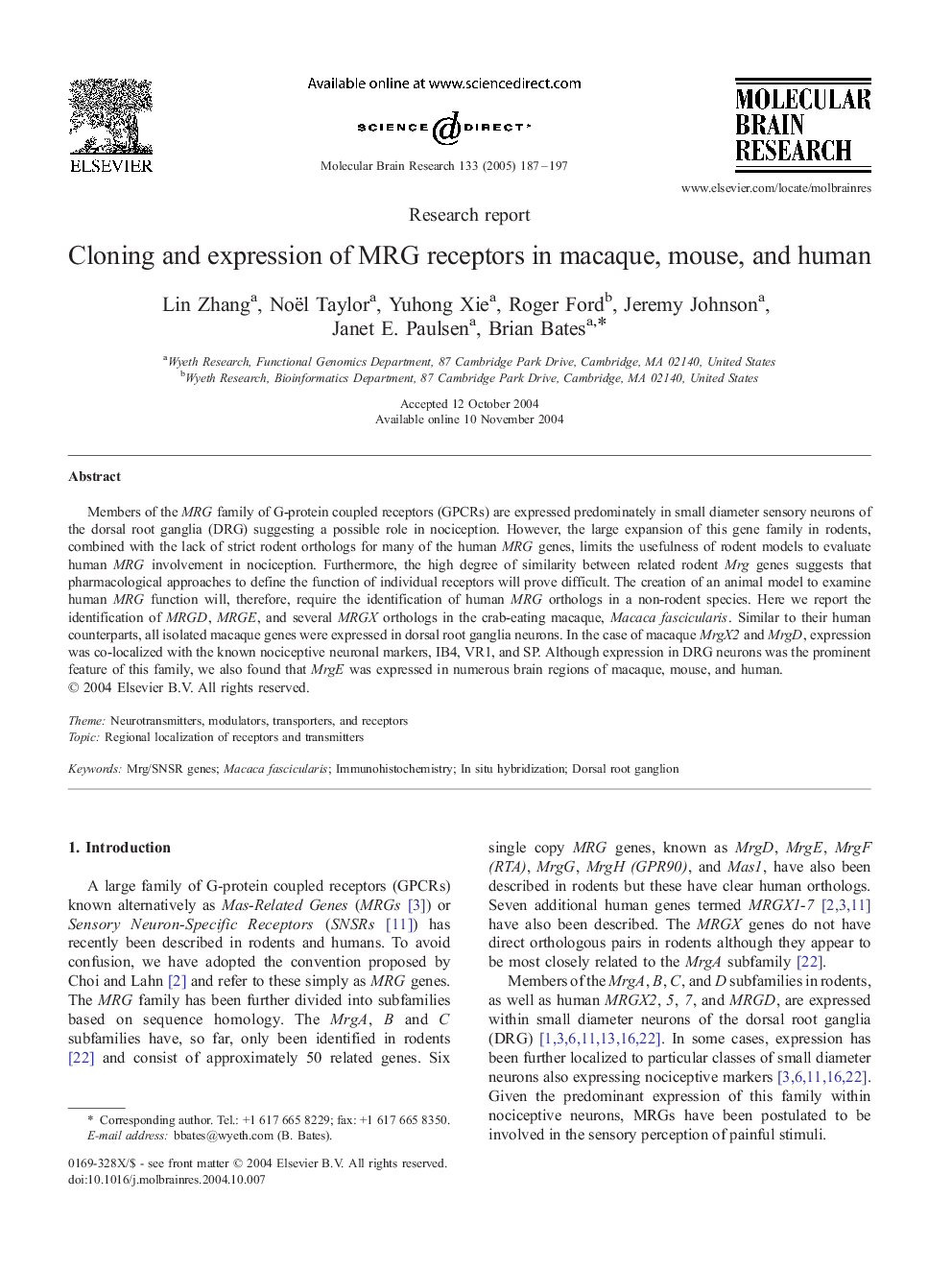| Article ID | Journal | Published Year | Pages | File Type |
|---|---|---|---|---|
| 9410793 | Molecular Brain Research | 2005 | 11 Pages |
Abstract
Members of the MRG family of G-protein coupled receptors (GPCRs) are expressed predominately in small diameter sensory neurons of the dorsal root ganglia (DRG) suggesting a possible role in nociception. However, the large expansion of this gene family in rodents, combined with the lack of strict rodent orthologs for many of the human MRG genes, limits the usefulness of rodent models to evaluate human MRG involvement in nociception. Furthermore, the high degree of similarity between related rodent Mrg genes suggests that pharmacological approaches to define the function of individual receptors will prove difficult. The creation of an animal model to examine human MRG function will, therefore, require the identification of human MRG orthologs in a non-rodent species. Here we report the identification of MRGD, MRGE, and several MRGX orthologs in the crab-eating macaque, Macaca fascicularis. Similar to their human counterparts, all isolated macaque genes were expressed in dorsal root ganglia neurons. In the case of macaque MrgX2 and MrgD, expression was co-localized with the known nociceptive neuronal markers, IB4, VR1, and SP. Although expression in DRG neurons was the prominent feature of this family, we also found that MrgE was expressed in numerous brain regions of macaque, mouse, and human.
Keywords
Related Topics
Life Sciences
Neuroscience
Cellular and Molecular Neuroscience
Authors
Lin Zhang, Noël Taylor, Yuhong Xie, Roger Ford, Jeremy Johnson, Janet E. Paulsen, Brian Bates,
